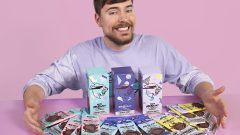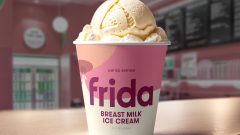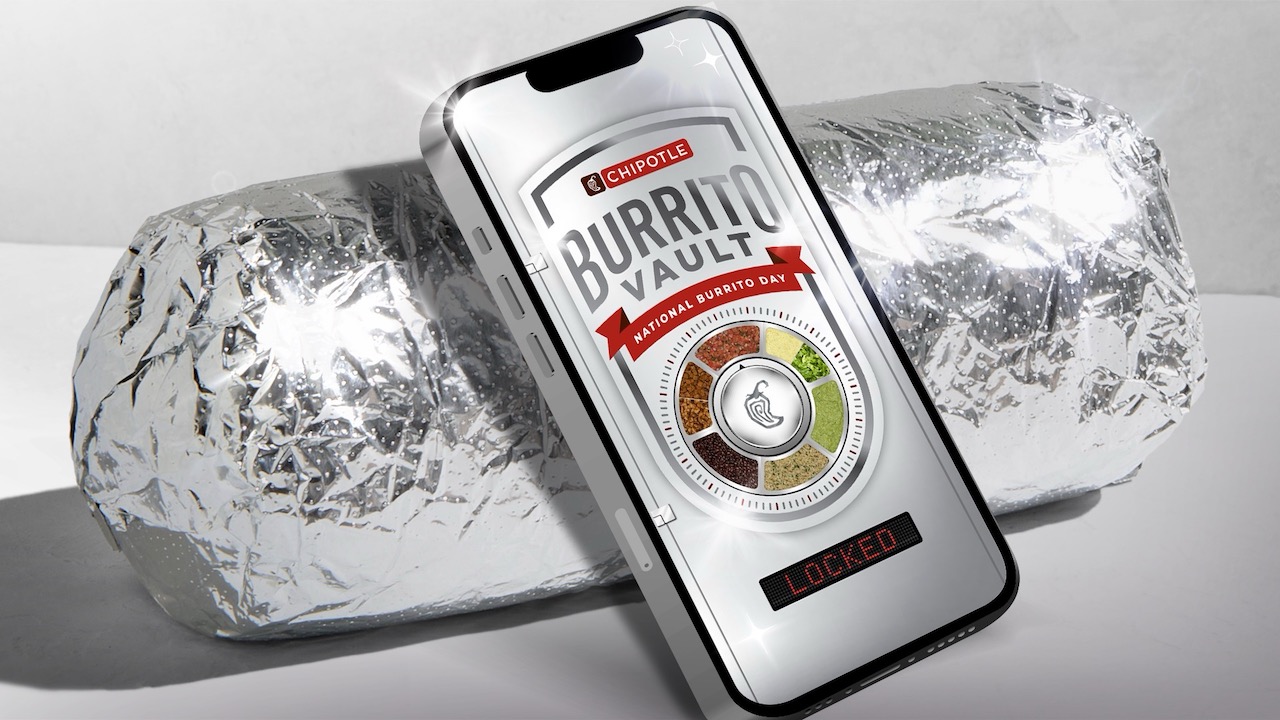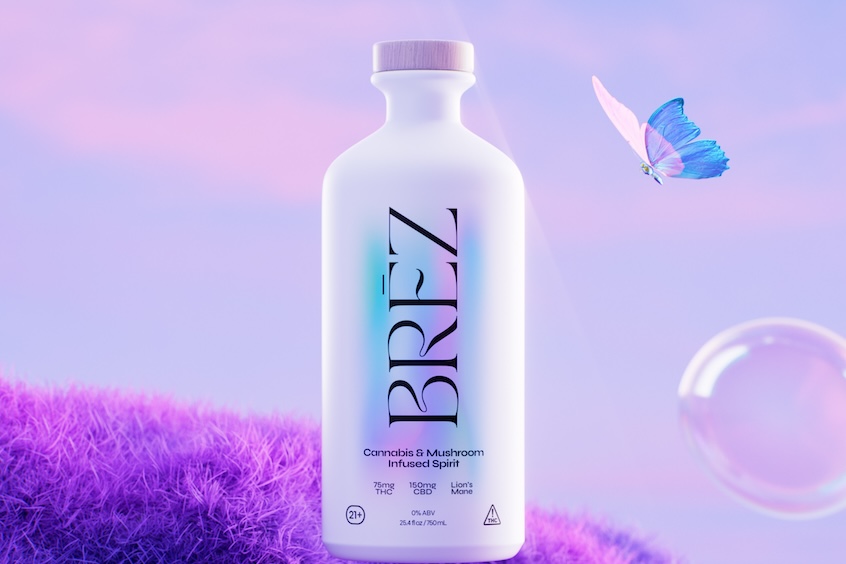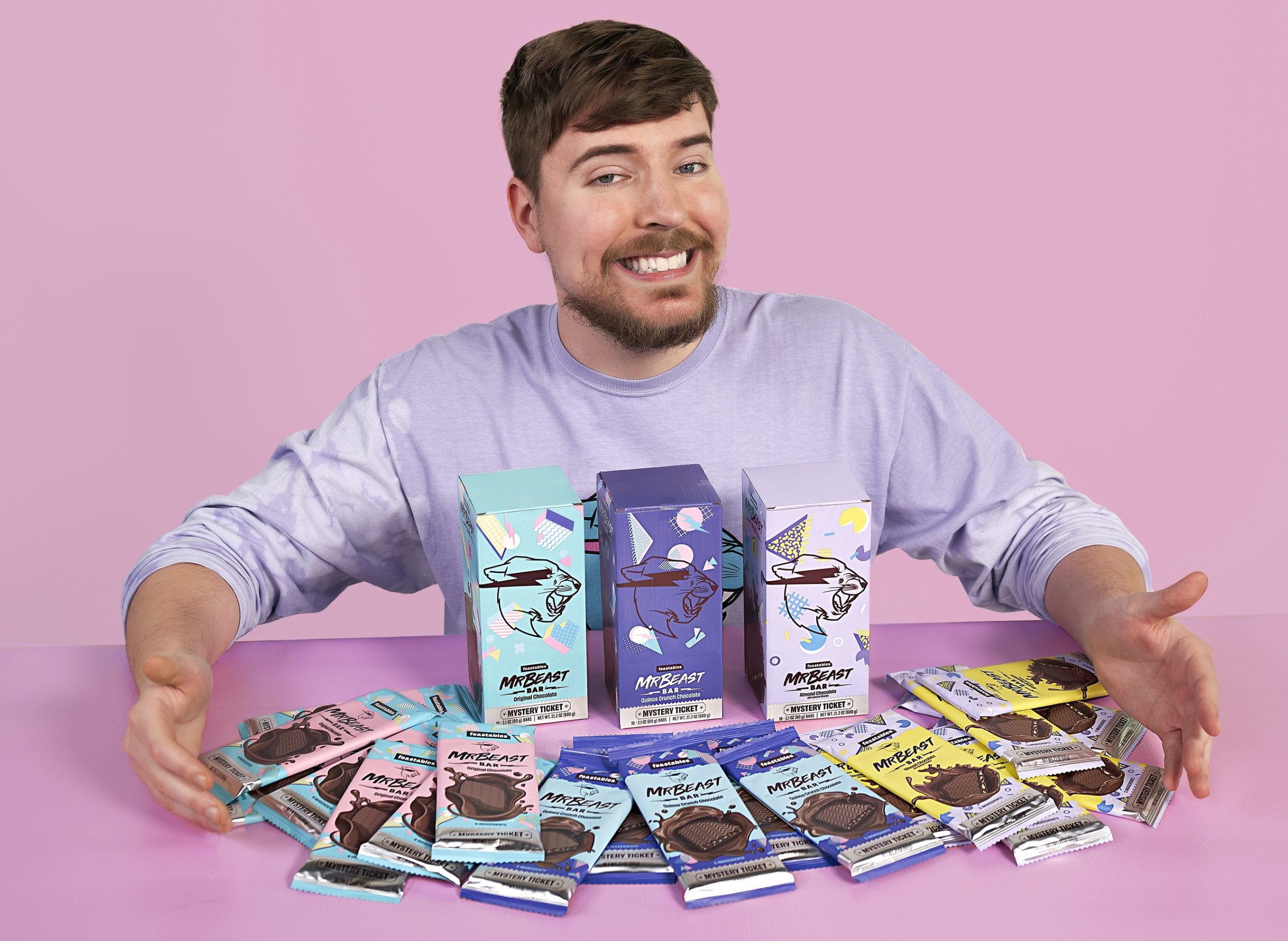This Installation Shows You Exactly How Much Synthetic Dye Kids Consume Yearly
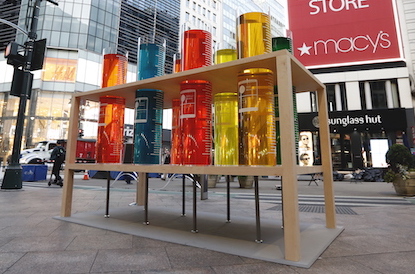
Not all fruit snacks are created equal. Some use real fruit, others use artificial dye. But, only one sells well. This was the issue KIND Healthy Snacks faced with their fruit snacks. Made entirely of real dried fruit, their snacks weren’t selling as well as their neon colored counterparts. So KIND crunched the numbers – and not the ones you expect.
According to the company, because of the lack of regulations on food dyes and their resulting prevalence in “healthy” sounding foods like fruit snacks, American children collectively consume 2,000 gallons of artificial dyes per year. Last week, to put this amount in perspective in real life, KIND revealed a pubic installation in NYC’s Herald Square that displays all 2,000 gallons in full.
This installation consists of eight test tubes in a giant test tube rack, each containing one of the eight, brightly colored food dyes approved for use in the US, as well as foods they are found in that wouldn’t typically be expected.

This is only the latest battle in KIND’s war against unnatural food. Artificial dyes have long been a villain to KIND, a company who prides itself on staying away from the substances, as well as many other common additives that are deemed unnatural.
But the question is, what’s the concern? If these dyes have been approved by the FDA, why should we be worried about consuming them?
The answer, unlike fruit snacks, is grey.
It’s been theorized since the mid-70’s that additives like food dyes are linked to hyperactivity in children, when Kaiser Permanente’s chief allergist, Ben Feingold, wrote about it in his book Why Your Child is Hyperactive. Since then, countless studies have been done, but the results have historically been hard to solidify. The nature of these studies, unfortunately, have presented issues with internal validity due to dosage size, relying on parents to record results that are difficult for the scientifically untrained eye to catch, and the possibility that some children may be affected by something else in the food they were fed. So, while most studies did indeed link dyes to hyperactivity, skeptics still felt justified.
Recently, evidence has mounted. As methods of study have become more trusted, and agreeing studies continue to accumulate, so too do their conclusions. In a 2016 report, The Center for Science in the Public Interest (CSPI) reviewed multiple studies and meta-analyses and concluded that, while not going so far as to cause ADHD, food dyes have a definite effect on many children and that, with such an overwhelming amount of studies concluding the same thing, the FDA should take action.
This will be a hard sell. Unlike the European Food Safety Authority, where food dyes are banned in favor of natural colorings, the FDA is a reactionary agency. Foods in America are tested for safety by the companies who sell them, the FDA only checks these tests. They only step in and conduct their own tests when they feel it’s necessary. So, it’s entirely possible for unhealthy additives to slip through the cracks if their adverse effects are not immediately distinguishable.
This means that the FDA is unlikely to make a change unless there is a documented demand for it. Right now, brands as big as Kraft and Kellogg’s have pledged to remove artificial dye from some of their products after public complaints. The hope is that, eventually, the government won’t be far behind if notoriously stubborn corporations are already making the move.
Until then, it will be up to the consumer to demand natural additives in their food. And, if it’s already been proven that natural colorings can be used on a large scale and artificial dyes have have no nutritional value, then the question isn’t whether we should demand this, but now, why wouldn’t we?



